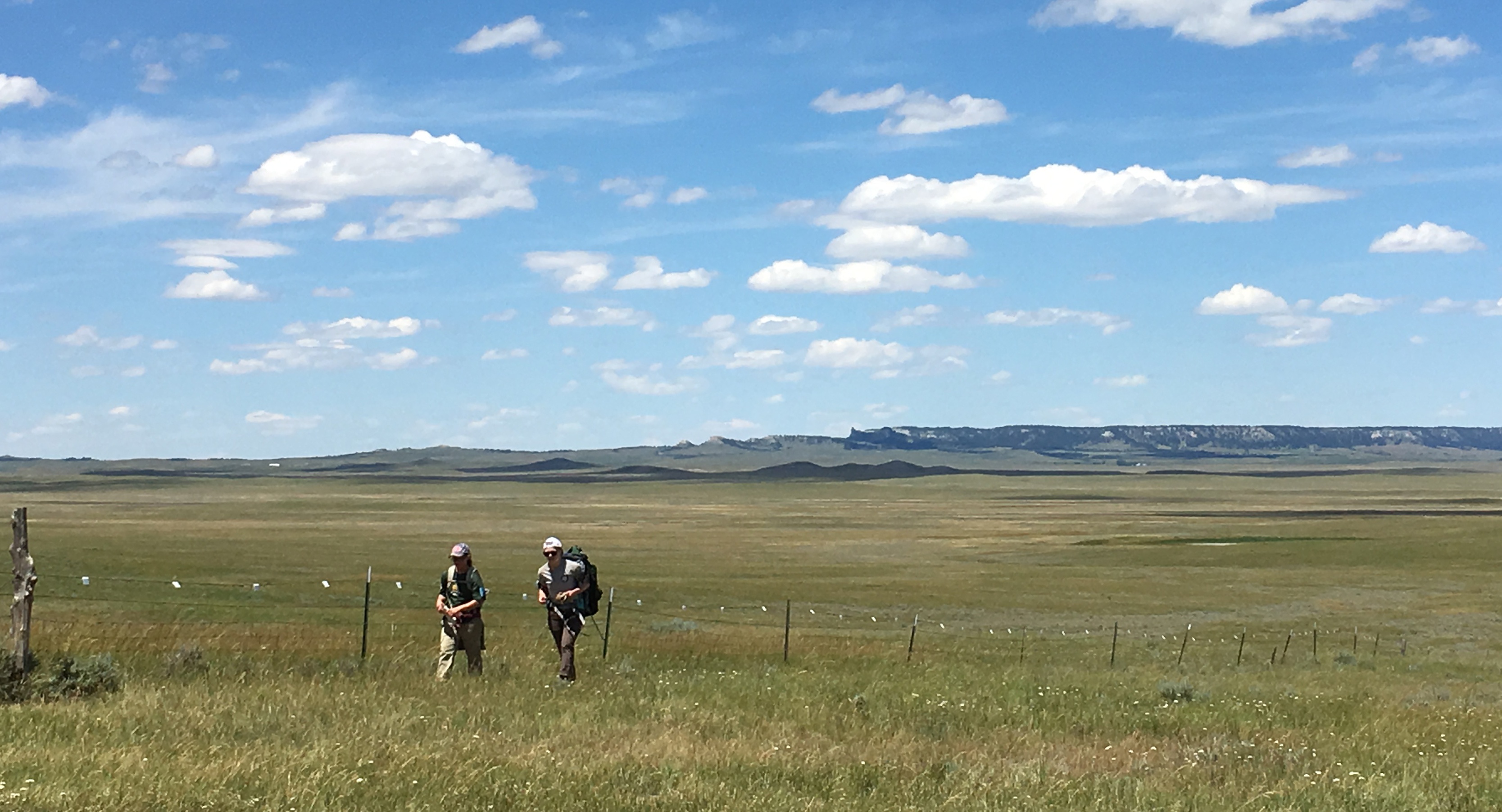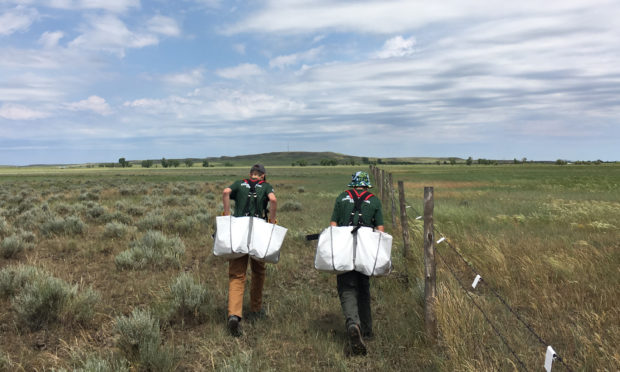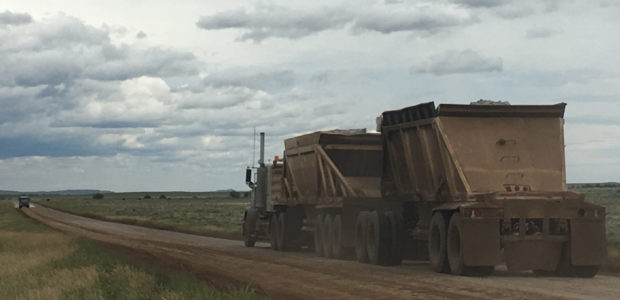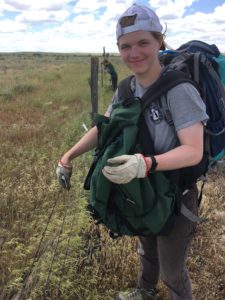We have much more to do and your continued support is needed now more than ever.
One flag at a time
Teens learn the value of sagebrush ecosystem

In the sagebrush prairies of eastern Montana, livestock fence can create a formidable obstacle for wildlife. For sage-grouse, livestock fences near breeding areas blend into the landscape and create a fatal collision risk. For its third summer, in an effort to mitigate the negative effect of fences on grouse and other prairie species, the National Wildlife Federation (NWF) has employed teens and young adults to mark, or flag fences around Montana. Placing markers on the top wire of fence increases visibility, and reduces the risk of fatal strikes by up to 80%.
Ghosts of the past challenge wildlife of the present
The extent of human reach and impact is heavy across what most would consider an untouched landscape. In Carter County, which has only one incorporated town, and roughly 1,000 people spread across 3,000 square miles (for reference think between the size of Delaware and Connecticut), the negative effect on wildlife became a daily occurrence for our crews.
“When you’re out there on the ground you think, wow, I’m making a difference”
– MCC Youth Crew Member, Sammy, 16yrs

Much of the problem is found in woven wire, typically used to fence sheep. Woven wire can be problematic for pronghorn antelope and young deer and elk. Not only do these fences create impermeable barriers for migrating wildlife, but often adult animals attempt to jump over and become entangled in the top wire. Our crew came upon an especially deadly stretch where we found 5 deer carcasses in a 1/2 mile stretch of fence.
Fence is not the only human impact on the prairie. Several of the crews work sites were located near a busy bentonite mining road. Huge dual trailer semi-trucks, water trucks, and graders whizzed by every few minutes. If the humans of the group couldn’t stand the high level of activity, the sage-grouse surely wouldn’t. Strategic timing and exclusion buffers surrounding breeding areas are a vital component to sage-grouse management plans, and encourage responsible development in the sagebrush grasslands of the west.

Hope for the future
Both the bentonite mining and surrounding fences are a prime example of the multiple pressures sage-grouse experience on a daily basis. Wildlife friendly fencing practices are also becoming more widespread, as ranchers replace decades old fence and retrofit existing, better yet remove the fence entirely. On our last day in the field, crews marked a newer and much improved wildlife friendly fence. Tight barbed wire with a raised smooth bottom wire will allow animals to scoot under the fence and not impede migratory movement. With our newly added markers, the fence is now modified for antelope, deer, elk, sage-grouse, sharptail grouse, raptors, and a host of other bird species.
“I didn’t even know what a sage-grouse was before this”
-MCC Youth Crew Member, Nathaniel, 15yrs.

Humans are not always around to witness the impact and ultimate effect of our actions, which possibly contributes to a disconnect between conservation and today’s younger generation. By getting young Montanans out into the field, teaching them the value of the sagebrush ecosystem, and demonstrating both the beautiful and sometimes ugly side of humans’ impact, National Wildlife Federation is creating responsible stewards of the land- one flag at a time.
Through August 2017, NWF will be working across Montana connecting teens and young adults to the sagebrush ecosystem. Follow along as Hayley blogs from the field.






















